Joy to Our World

The future is bright. Here, nine trending happenings that will do your body good, elevate your mind’s happiness quotient and lift your spirits.
Making Medicine Better
No one will ever say: “Good news, you have a life-threatening disease!” But we’re getting closer to a day when a serious diagnosis is more of an inconvenience than a death sentence.
Advances in medicine are producing sophisticated new diagnostic tools, like imaging and rapid DNA testing, with ever-more accurate and faster results. They’re leading to more personalized medicine, with patients receiving a treatment that matches their version of a disease, instead of the treatment their neighbour gets. Cancer survival rates, for example, are already increasing, thanks to earlier detection and more advanced approaches.
We’re making headway in areas of medicine that were previously inaccessible, such as neuroscience. Every year, we understand more about the brain and we’re using this knowledge to tackle disorders in novel ways. We now view the nervous system – and the immune system, for that matter – as an intricate network tied to the form and function of every other part of the body.
Baby boomers are entering their senior years with an expectation that these years will be vibrant. This generation of consumers expects solutions to their diminishing eyesight, or the pesky arthritis in their hands. Their demands have been driving an industry of rapid development in disability-related gadgets and technology. (Where would we be without font resizing?) Advances like these are boosting our quality of life even as we develop limitations.
With the proliferation of social media platforms and online news, we’re more likely to hear about medical advances that traditionally might have become buried in some science journal. What does this mean? We have a chance to get fired up about discoveries and treatments, to share the good news, and hopefully to make adjustments to our risk behaviours that will extend or even save our lives.
In the near future, scientists will unlock more mysteries in the human body. We’ll see more biotechnological breakthroughs, and personalized medical treatments for a wider range of diseases. We’ll see groundbreaking new methods of identifying people at risk of disease while prevention is still possible.
No, we don’t expect anyone will ever be excited to learn they have cancer or cardiovascular disease or Alzheimer’s. But there may soon come a time when it’s a mere nuisance and nothing more. We can’t wait. —Lisa Bendall
Breaking Through Barriers
It’s a world first: Doctors at Toronto’s Sunnybrook Health Sciences Centre have non-invasively broken the blood-brain barrier to treat a malignant brain tumour with chemotherapy. Unlike the rest of the body’s blood vessels, the brain’s capillaries are lined with tightly packed cells to keep out foreign agents. But by infusing microbubbles of gas into the bloodstream and using focused ultrasound to vibrate the bubbles in the brain, doctors were able to jiggle apart these cells temporarily, and send the drug across the barrier. This breakthrough mechanism could be used for delivering medications for other brain disorders – including Alzheimer’s. In fact, a mouse study suggests that breaking the blood-brain barrier actually helps the brain clear itself of Alzheimer-related plaques. —Lisa Bendall
Sunny Ways
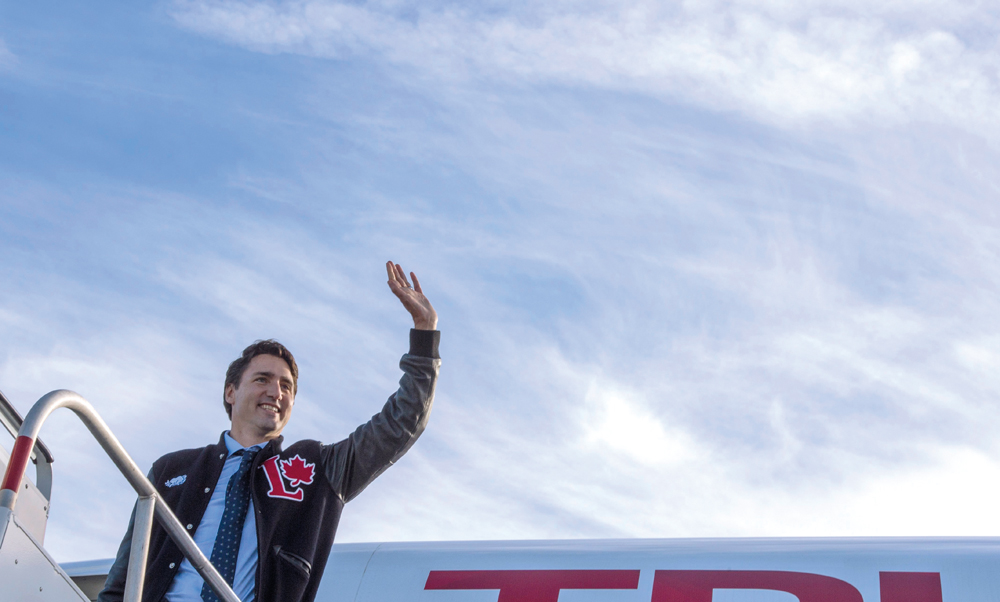
One of the most prescient predictions ahead of the recent Canadian federal election came courtesy of The New Yorker, which suggested that the ouster of Stephen Harper would prove “enough to make Canada feel a bit more Canadian again.”
That’s because the Great White North had become a land of disappearing environmental principles; one that shuttered non-partisan human rights and scientific agencies; one with a flailing foreign reputation; one where the federal government shunned transparency and where the Prime Minister showed such little respect for his political rival that he referred to him condescendingly as “Justin,” conjuring images of Canada’s “other Justin” – Bieber – a kid who isn’t ready to sit at the big boy table.
Fortunately, the majority of Canadians don’t play the politics of pettiness and division. In hopes of rediscovering the Canada they once knew they opted for a familiar name – Trudeau – and a stunning election victory that echoed across the country like a national exhale.
Far from the fear-peddling politics of his predecessor, Trudeau campaigned on hope and optimism, championing diversity and human rights and “real change.”
“Sunny ways, my friends. Sunny ways. This is what positive politics can do,” he proclaimed after his victory, paraphrasing former prime minister Sir Wilfred Laurier.
Of course, Trudeau still has to put pledges like restoring the age of OAS eligibility to 65 and navigating the Syrian refugee crisis into effect. He also faced his first setbacks when U.S. President Obama rejected the Keystone XL pipeline on his second day in office, while receiving a bleak federal budget forecast shortly after. Still, there is a palpable feeling of optimism in Canada.
It’s a hope that we can return Canada to a land of peace and tolerance. A land in which both Justins can live side by side – one the rock star politician and the other a rock star who had a monkey confiscated in Germany. At least we elected the right one prime minister. —Mike Crisolago
Hyping Type
In 1973, decades before tech gurus coined the terms iPad and smartphone, American engineer Don Lancaster invented what you might call the missing link in the leap from typewriters to personal computers.
Lancaster’s TV typewriter, a keyboard that connected to any television turning it into a computer monitor, is a forerunner to the iDevices that revolutionized 21st-century life and a thrilling example of how far and fast technology can move in a few short decades.
It also makes it a natural fit in the MZTV Museum of Television’s Keyed Up, Switched On, Logged In exhibit, which spotlights the massive breadth and potential of human ingenuity through a display of antique typewriters from the late 19th and early 20th century, set among the rare collection of televisions curated by Moses Znaimer (founder and CEO of ZoomerMedia) for decades.
The typewriters, courtesy of collector Martin Howard (antiquetypewriters.com), include the 1889 model Odell 1 (left), which boasts an engraved Native American design on its gold-painted base. To type, users moved the handle back and forth, pushing it down over individual letters and characters to spell words. It seems archaic, yet it foreshadows one of today’s most popular means of communication – two-thumbed texting.
It’s a tangible tribute to how past innovations echo future revolutions. Every generation builds a bridge to the next frontier, and one thing is certain: while tomorrow’s potential is limitless, tech bygones are never really bygone. —MC
The exhibit runs until Dec. 23, 2015. www.mztv.com
Nurturing Nature
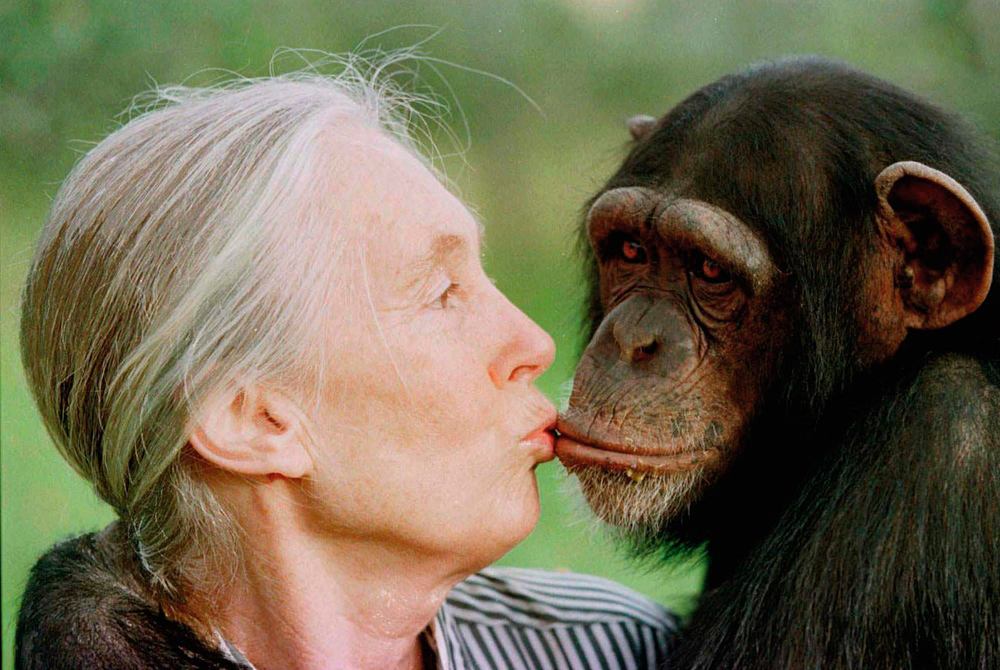
Jane Goodall needs a chair. Not to sit down but on which to stand taller. “It’s not possible for me to talk to people I can’t see. And it would be absolutely ridiculous for you to try and listen to people you can’t see. So can you all see me?” So began a 45-minute presentation with Goodall, 81, standing on a chair, the chair perched on a stage riser at a fundraiser in Toronto. She tells the captivated crowd of a few hundred that her mother taught her not to waste opportunity; tonight is no different.
She spends 300 days a year on the road, crossing the globe to drum up support. And not just for the chimpanzees of Tanzania’s Gombe National Park she made famous more than 50 years before but also for conservation and Mother Earth – a figure she seems to personify. Gentle, wise, committed and optimistic, she conveys all these in person. But it’s not until we sit down together that I realize what I admire most about Goodall. Resolve.
“I went into the world at a time when women didn’t,” recalls Goodall about her beginnings as a primatologist. All the way from England, determination took her to Africa and despite lack of formal training – her family couldn’t afford college – she fulfilled her childhood aspiration of living with and studying the animals from her beloved Tarzan books. She went into the jungle of Tanzania to do it, alone. Was she ever scared? “No. It was my dream,” she answers matter-of-factly.
Goodall’s visit to the Canadian branch of her Jane Goodall Institute is for a brief few days. She rhymes off her itinerary before a two-week Christmas break back in England: America, Cuba, Chile, Columbia, Argentina and Paris for the World Climate Summit. It’s tiring, she admits. So will she ever retire? “I may have to. [My] body may force me off the road,” she says, adding resolutely, “But as long as my mind’s working, I’ll be battling.”
Rallying the “troops” the previous night, she tells us “think and act local.” Goodall understands well enough how overwhelming global issues can be, but deter us it shouldn’t. “Every single one of us matters. Every single one of us has a role to play. Every single one of us makes a difference, every single day,” she said.
I, for one, am inspired and, as Jane Goodall assures, that’s a good start. janegoodall.ca —Tara Losinski
Feeling the Force Redux
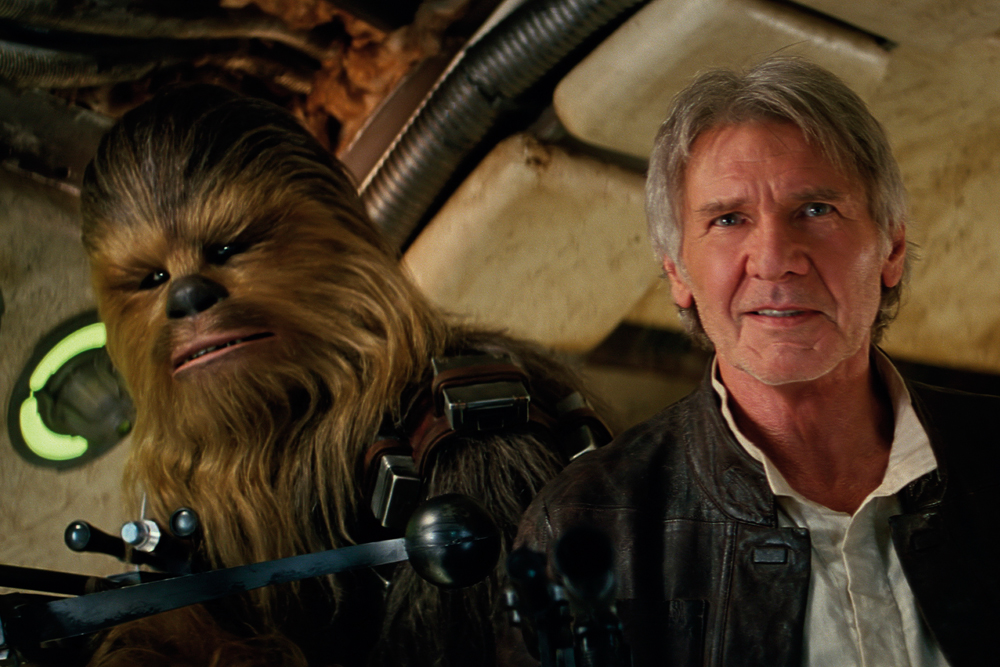
I was 10 when my grandparents took me to see Star Wars in 1977. It was my first non-animated movie. Almost four decades later, the same excitement, fear and joy rush over me whenever I recall that pivotal scene where Han Solo swoops down in the Millennium Falcon and blows the TIE Fighter to smithereens, enabling Luke Skywalker and his X-Wing Fighter to destroy the Death Star. On Dec. 18, the long-awaited sequel Star Wars: The Force Awakens opens. I’ll be there. I’m one of the fans who bought an advance ticket – according to several online movie sites, the film has already blown away advanced ticket records in both the U.S. and the U.K.
The first three films, Star Wars, The Empire Strikes Back and Return of the Jedi, also known as episodes 4, 5 and 6, were an integral part of many a childhood (Star Wars purists pretend the three prequels don’t exist). For me, they were inspirational. I was a tomboy, sure, but the universal story of good versus evil, of family and friends, love and loss don’t have gender boundaries. I became a writer because of those three films. In high school, I wrote Star Wars fan fiction for my creative writing class. I went to film school and graduated with a degree in screenwriting. Today, I write novels and screenplays. While none of my work can be classified as science fiction, those story-telling principles that captivated me and millions of others became part of my creative DNA.
In 1983, U.S. President Ronald Reagan ended his speech announcing the controversial Strategic Defense Initiative – a proposed missile defence system – with the words, “The Force is with us.” The media jumped onboard and nicknamed the program Star Wars. Twenty-first–century franchises such as Twilight, The Hunger Games and Harry Potter have yet to influence the geopolitical sphere. Star Wars is more than a movie, more than the sum of its merchandise (and that’s saying a lot); it’s modern mythology – Shakespeare for the 20th century and beyond.
For my part, I hope The Force Awakens is as great as we all need it to be, and there are reasons to believe: J.J. Abrams is not only a slick director, he’s a fan. And the screenwriter behind Episodes 5 and 6, Lawrence Kasdan, penned the script. Then there’s the return of Han Solo, Princess Leia, Luke Skywalker and other dear friends from that galaxy far, far away. Since 1977, the original cast has endured its share of real-life struggles — Mark Hamill’s car crash, Carrie Fisher’s drug and alcohol abuse and Harrison Ford escaping death when his plane crashed last spring — which has made seeing them together onscreen again even more poignant. Indeed, the sight of Ford in the Millennium Falcon in the first trailer for the new film literally brought tears to my eyes. May the Force be with you. —Kim Izzo
She’s a Woman
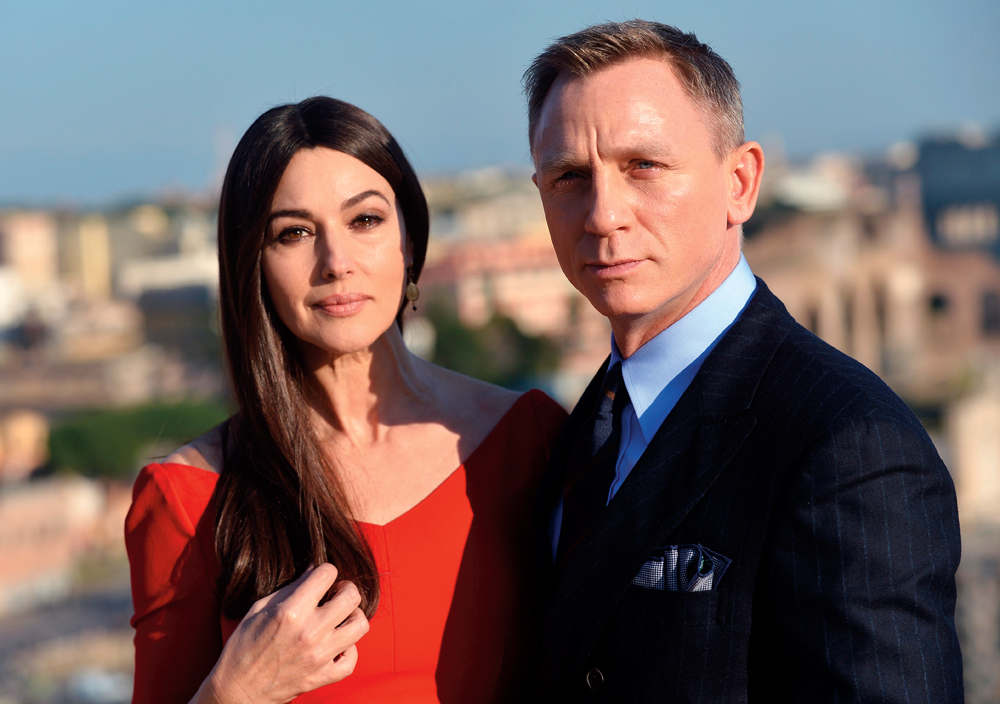
The shelf life of a Hollywood-leading actress has a best before date of 30, maybe 35, but that’s pushing it. After that, her roles lean in the direction of mother or hooker (though the hooker archetype ironically appears to be ageless).
Much has been written lately of the film business’s inability to fairly depict women onscreen (not to mention hire them off-screen, but that’s another matter). The multi-talented Amy Schumer’s skit “Last F**kable Day” starring Julia Louis-Dreyfuss, Tina Fey and Patricia Arquette lampooned the notion. Yet a few hopeful signs have emerged that indicate the fate of a woman’s career in movies doesn’t have to be Norma Desmond (who was portrayed as a washed-up star at 40).
Take the latest James Bond instalment, Spectre, which has the addition of a Bond girl who is older than Bond himself with Italian act-ress Monica Bellucci, 51, cast opposite Daniel Craig, 47 – though the film’s other Bond girls are in their 20s.
Of course, on the small screen actresses of a certain age have seen the tides shift in their direction – the Platinum Age of television, as it’s been dubbed by critics, has welcomed the likes of Jessica Lange, 66, Allison Janney, 55, Francis McDormand, 58, and Viola Davis, 50, among others into leading roles that extend far beyond the wife and mother parts.
But there’s still a long and winding road ahead. Oscar- and Emmy-nominated actress Maggie Gyllenhaal spoke out on the subject, “I’m 37 and I was told recently I was too old to play the lover of a man who was 55. It was astonishing to me. It made me feel bad and then it made feel angry and then it made me laugh.”
And that’s no joke. —Kim Izzo
Boldly Going …
The ancient Egyptians were the first to map it in the night sky, and the Babylonians called it Nergal, after their god of war. Copernicus sorted out its planetary rotations while H.G. Wells imagined its inhabitants invading Earth. We’ve named a chocolate bar after it, David Bowie crooned about it, the Curiosity rover took a spin on its surface and earlier this year we stranded Matt Damon there. If one thing’s certain about Mars’ allure, it’s that it has only grown stronger through the centuries. And in 2015, humanity’s fascination with the Red Planet hit an all-time high.
Images of Mars sent back to Earth by the Curiosity rover captured our collective imagination. Eagle-eyed enthusiasts claimed they spotted a bear in one photo, a dragon in another and a lady standing on a ledge in a third – probably looking for her dragon or bear.
In September came news of definitive proof of water on Mars. October brought news that NASA is actively scouting landing sites for human missions, while the organization most recently put out the call for astronauts who could find themselves on the first manned missions. As well, entrepreneur Elon Musk has discussed humans colonizing Mars while, in the Netherlands, the Mars One organization plans to do it a decade before NASA.
In September 1962, U.S. President John F. Kennedy declared, “If I were to say, my fellow citizens, that we shall send to the moon … a giant rocket … and do it first before this decade is out, then we must be bold.” Amazingly, 53 years later, not only have we reached the moon, but business moguls like Richard Branson and Naveen Jain have discussed sending tourists to visit or machinery to mine it.
If the 15th century, with the likes of Columbus and Cabot, ushered in the Age of Exploration, then the 21st century is the Space Age of Exploration. At last year’s ideacity conference (a ZoomerMedia property), I interviewed a schoolteacher who applied for the Mars One mission. I wanted to know why was she willing to take the one-way trip. Her answer: its success would make her and her colleagues the Christopher Columbuses of space colonization. Except, you know, they would land in the place they actually meant to find. —MC
The Boys Are Back
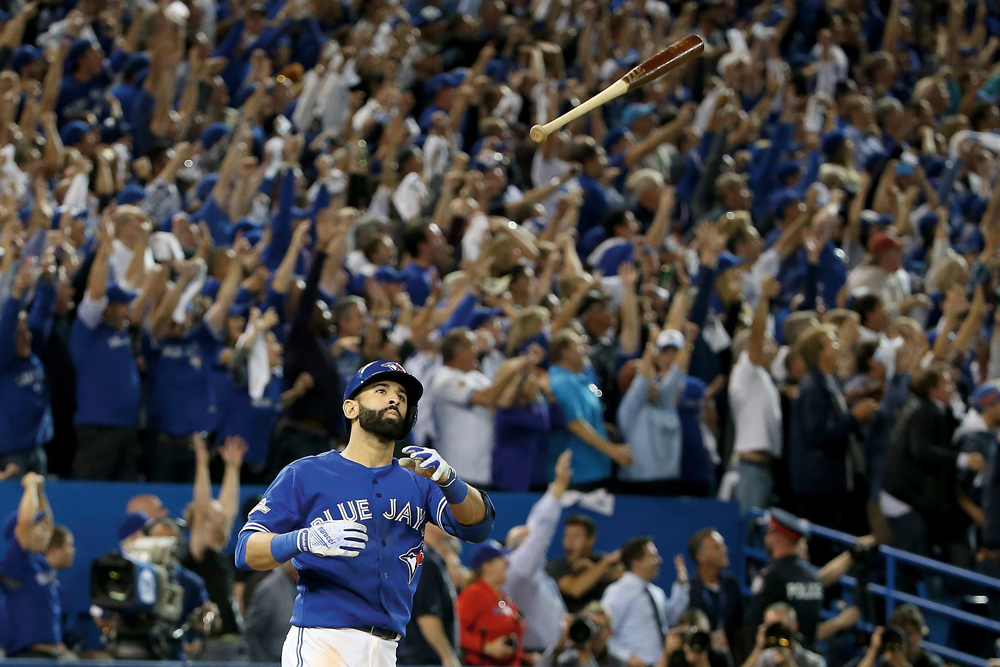
It took an almighty home run – followed by one of the most vehement bat flips you’ll ever see – and baseball was once again relevant in Canada. Jose Bautista’s three-run homer and subsequent in-your-face bat toss in the bottom of the seventh inning against the Texas Rangers, which propelled the Toronto Blue Jays into the American League Championship Series, was just the tonic this franchise needed to end 23 long years of failure.
It was a span punctuated by injuries, questionable signings, unlikeable stars, meaningless games and growing indifference from a dwindling fan-base whose last good memory – Joe Carter’s World Series-winning smash in ’93 – was fading rapidly. The deafening roar (perhaps still echoing through the Rogers Centre) that followed Bautista’s jack was a mix of joy and relief, combined with a healthy serving of “up yours!” the latter emotion due to the sizable chip that Jays’ fans carry on their shoulders.
As backers of the only Canadian team in the majors, they’re a touchy lot, quick to take umbrage at any perceived slight cast their way. In the 1992 World Series, it was the upside-down flag incident; in 1993, it was accusations that the U.S. national media favoured American-based teams; and this year it was the commentator who claimed Toronto fans couldn’t catch foul balls because they grew up playing hockey instead of baseball.
However fatuous his theory (the broadcaster in question later apologized to “all of Canada”), no one could deny that fans from coast to coast, butter-fingered or not, had adopted this colourful collection of players from all over the baseball map – the U.S., Dominican Republic, Mexico, even two from native soil – as their own. A jam-packed stadium, a winning team, dramatic home runs, controversial bat flips and bruised national pride – baseball is back in our sport consciousness. Fledgling fans will treasure these new memories while the old diehards will revel in the knowledge that the long wait for their beloved team to return to the post-season was well worth it.
Although it didn’t end according to script – the Jays eventually ran out of miracles and lost to the Kansas City Royals – next year’s team will be back, eager to complete the unfinished business of making it to the World Series. Should be fun. See you in April. —Peter Muggeridge